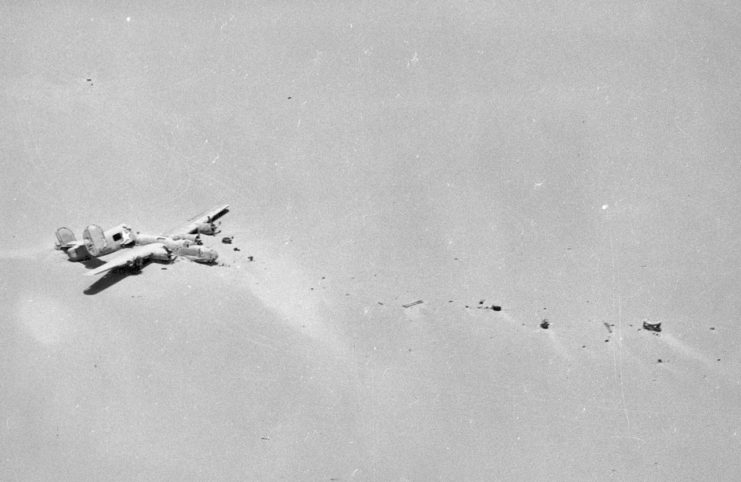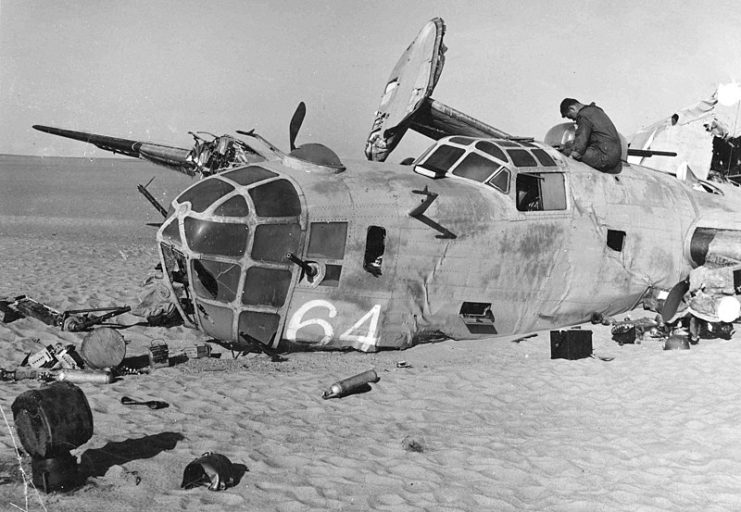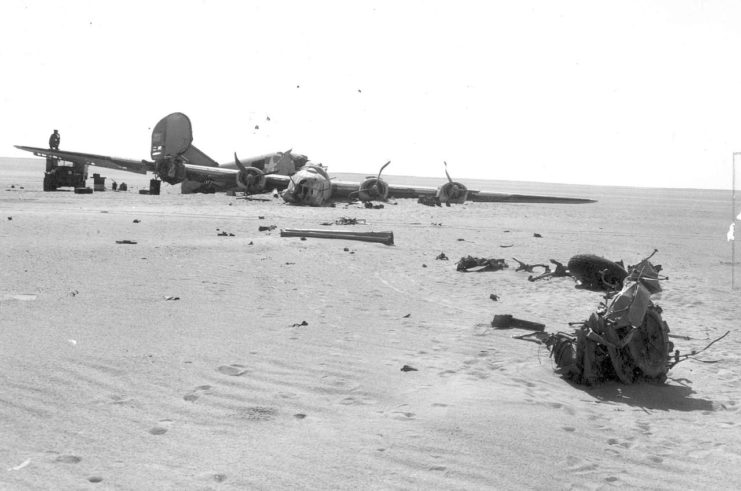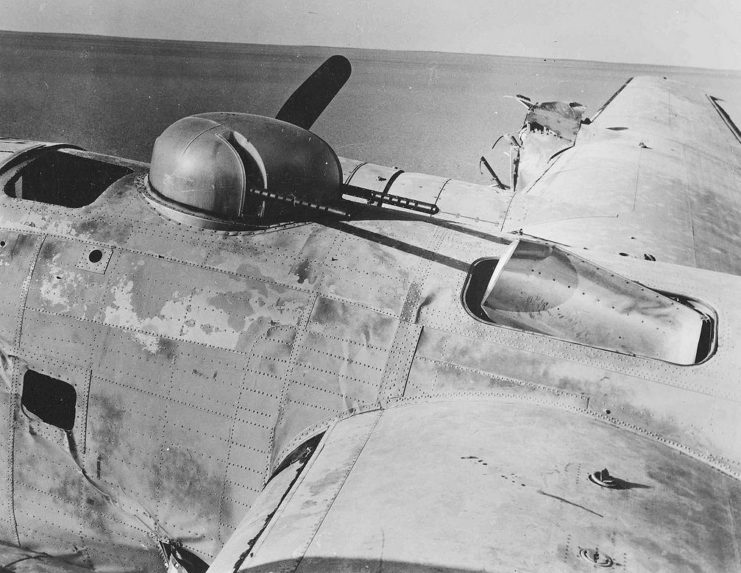The Mysterious Disappearance and Discovery of the Lady Be Good
On 4 April 1943, an American B-24D Liberator named Lady Be Good mysteriously disappeared while returning from a bombing run over Naples. The aircraft seemingly vanished into thin air. In 1958 a British oil exploration team discovered the wreckage of a large aircraft laying in the Libyan Desert. Upon closer inspection, it was revealed to be the wreckage of Lady Be Good that went missing 15 years before.
The story of her disappearance, her time capsule-like rediscovery, and her crew’s grit is nothing short of incredible.
Lady Be Good
Lady Be Good was a new aircraft when she was assigned to the 514th Bomb Squadron on March 25, 1943. Her crew was also fresh, having arrived in Libya the previous week. Lady and her nine-man crew flew their first, and what would be their last mission together on April 4. The formation was to take off in waves from Soluch airstrip in Libya and make their way to Naples in Italy, 700 miles away.
Lady was one of the last aircraft to depart from Soluch. On the way, the formation ran into powerful sandstorms, which forced most of them to return back to base. Lady Be Good carried on.
When she reached Naples at 7:30 pm at an altitude of 25,000 feet, the target was hidden by poor visibility, so the bombers turned around and headed home. The aircraft dropped their ordnance into the Mediterranean Sea to reduce their weight and conserve fuel.
On their return to Soluch, Lady Be Good, who was flying alone, encountered problems. At 12:00 am, the aircraft’s pilot, Lieutenant William Hatton, radioed Soluch informing them that their automatic direction finder was not working and that they needed the directions to the airfield. However, these directions never came, causing the B-24 to fly straight over the airfield and deep into the Sahara Desert.
By 2:00 am the aircraft was running on fumes, so the crew parachuted out. Without anyone onboard, the ghostly aircraft carried on alone for another 16 miles, descending along a shallow trajectory and hitting the ground relatively gently.
A search and rescue mission was launched but did not find the aircraft or its crew. It was assumed that Lady Be Good had crashed into the Mediterranean Sea. Its loss was a mystery.
Discovery

Lady Be Good remained one of WWII’s many unsolved mysteries until 1958. A British Petroleum exploration team was flying over the Libyan Desert in November 1958 when they spotted the wreckage of a large aircraft. They were unable to inspect the wreckage themselves but reported its location.
In May 1959 a team ventured out to the location of the wreckage and found it to be the missing plane Lady Be Good. They instantly noticed its remarkable, time-warp-like condition.
Lady Be Good was broken in two, but the gentle nature of the crash and bone-dry conditions of the desert meant the aircraft was perfectly preserved. The team found containers still filled with water, a flask that still contained coffee, and the crew’s personal possessions such as clothes and the navigator’s logbook.

In addition, the B-24’s .50 caliber machine guns still worked, with the investigators actually firing one, and the aircraft’s radio was still functional. One of the engines was found to work too.
However, they did not find any crew or their parachutes, indicating that they bailed out.
Around a year later the US military became involved and began a search for the remains of the missing crewmen. The search did not find their remains, but it discovered personal artifacts and markers strewn across the desert.

In 1960, in a way similar to how the aircraft itself was found, a British oil exploration team found five of the crewmen’s remains, prompting another US search for the last four. The search found two bodies, while yet another British oil team found a third. The ninth airman has never been found.
Experts at the time estimated that with their supplies, the men could not have made it more than 30 miles in the brutal desert. Incredibly, the furthest man was found 109 miles from the aircraft.
The discovery of the bodies also returned many items used by the men during the trek, including a sobering diary by Lieutenant Robert Toner, which detailed the crew’s final days.
Explanation

The artifacts found at the wreckage and on the remains of the crewmen have enabled experts to piece together what likely happened to Lady Be Good and its novice crew.
When returning home from Naples, the crew likely thought that the desert below them was the Mediterranean Sea, which is why they bailed out instead of attempting to land the aircraft. One of the crewmen died immediately on impact.
The rest managed to meet up and established that they were 100 miles from Soluch. In reality, they were 400 miles away.
They knew they had to head north, and all eight were able to travel an exceptional distance of 85 miles with just half a canteen of water. However at this point, five of the men were too weak to carry on, so the remaining three continued north for another 20 and 27 miles before also succumbing to the desert.
It is thought that if the men returned to their aircraft, they may have survived the ordeal thanks to its working radio and large stocks of supplies.
The men of Lady Be Good are a testament to the sheer strength of the human will to survive. They managed to walk a distance many thought impossible, through some of the harshest conditions anywhere on the planet.
Today, the eight airmen found in the desert rest in the US.
Post a Comment
0 Comments